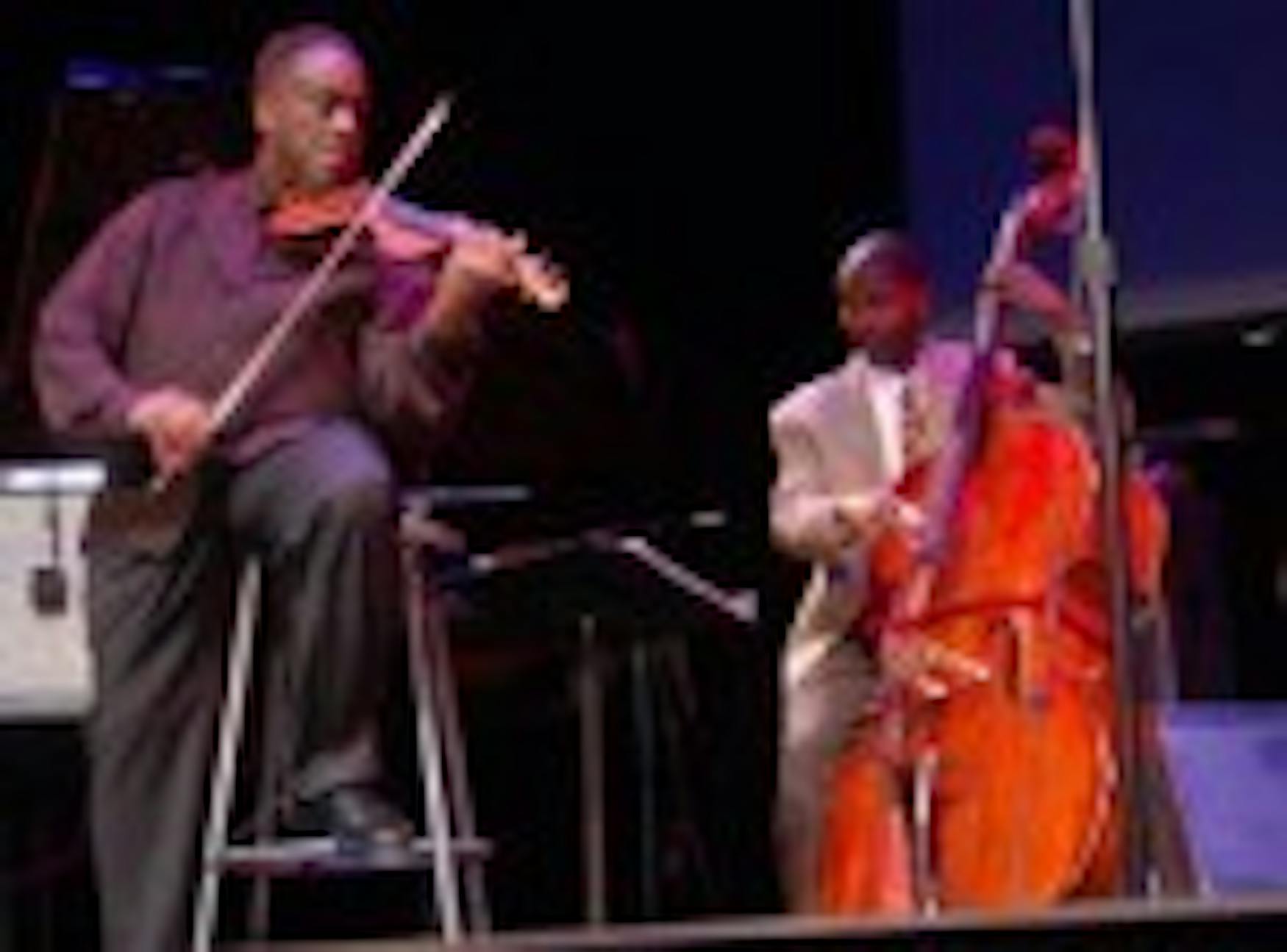Blake invokes soul and sorrow
Crying-that essential human act-is a large part of violinist John Blake Jr.'s music. He plays African-American spirituals, songs that originated from the cries of enslaved Africans after they were shipped to America in the 18th and 19th centuries. He also aurally invokes the sorrow of slavery in songs like "Go Down, Moses" with a technique on the electric violin that makes its strings sound like the cries of a human voice. Most remarkably, the jazz musician told me that the listeners of his music sometimes cry as well. "Sometimes when I play, I see people crying. Some are hugging the wall or rocking their heads with their eyes closed. The music reaches people, engages people. It's the greatest tribute to the music to see people clap and cry during a performance," he said, speaking about a time when he visited a retirement home with his quartet. Playing for listeners who remember the songs and have experienced the hardships they describe was an enlightening experience for Blake.
Since blues songs and spirituals came from the struggles of African-American slaves, the experience of listening to Blake's music can affect people in various ways. A black teenager, around 13 years old and accompanied by his grandfather, approached Blake to shake his hand after his concert last Thursday at the Berklee Performance Center: Because of their age difference, the two listeners inevitably had a different understanding of the songs that were played. Yet while Blake's music is defined by history and race, people of all ages and backgrounds attended and adored his concert.
Blake's quartet-which consisted of pianist Sumi Tonooka, bassist Avery Sharpe and drummer Harry Reed-played with Howard University's jazz choir, Afro Blue, switching off between combo-based, instrumental blues tunes and vocal-heavy spirituals. The concert was fantastic, and Blake's electric violin blended with the choir as naturally as a singer would. Songs like "Hold On" had the choir singing like a horn section, using swinging hooks to accompany Blake's warbling solos. Tonooka's improvisations were steady and virtuosic, and the few solos by Sharpe and Reed were equally sturdy. On the other hand, Afro Blue featured soloists that ventured beyond the harmonic range of the song by using dissonant lines to build color and tension.
Blake's violin wonderfully combines the soulful wails of vocalists and the technique of combo jazz improvisers. He is a gifted musician who toured with Grover Washington Jr.'s big band and played for 5 years with McCoy Tyner, the pianist known for his work with John Coltrane in albums such as A Love Supreme. Blake had listened to Tyner's albums extensively in the 1970s and finally had the chance to collaborate with him in New York City.
"One of the things I learned how to do with McCoy was how to blend. People never associated the violin with jazz, but he made me feel very welcome playing with horns and piano," he said. "He had a great influence on my playing. I understood how instruments blended with the violin, and I could begin to make my violin sound more horn-like or vocal-like. Sometimes, I hear air going through my fingers, even though the instrument I'm playing is made out of wood and string."
Blake also highlighted how much he enjoyed recently working with students at The Berklee College of Music and using his experience to develop younger players' ideas. He mentioned that the rehearsals with Afro Blue were very positive and had "the makings of a great performance." I may not have noticed anyone crying afterwards, but the warm applause and standing ovation indicated that the audience enjoyed his spirituals as much as I did.
"These were very powerful people who created this music," he said toward the end of the night. "Without their sacrifices, none of us would be here.



Please note All comments are eligible for publication in The Justice.